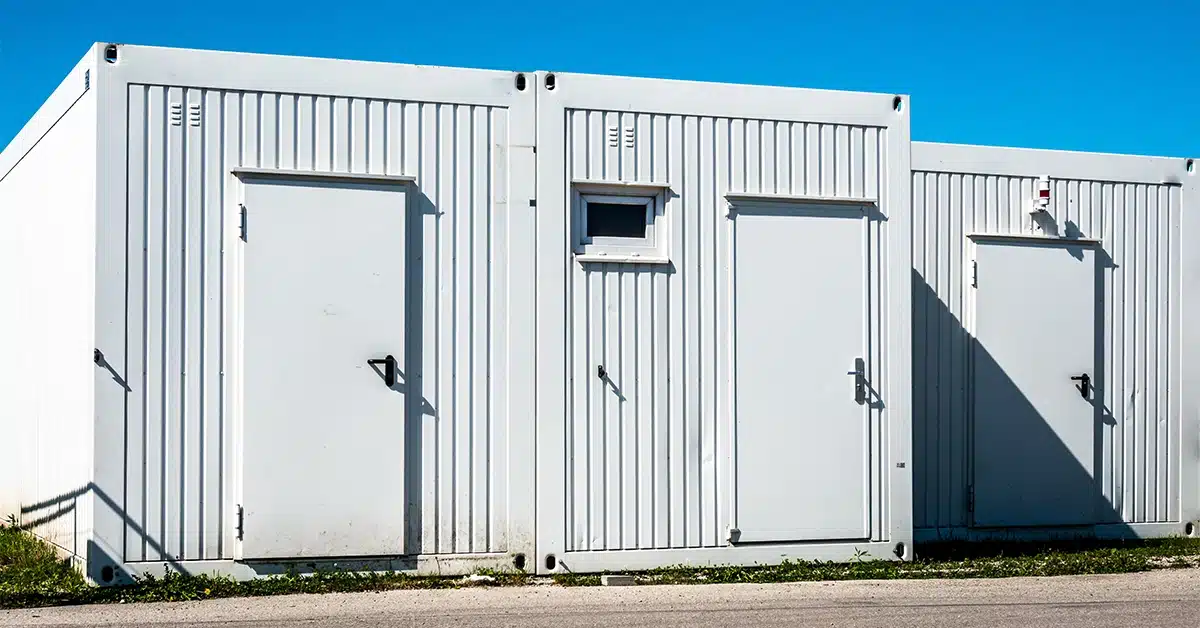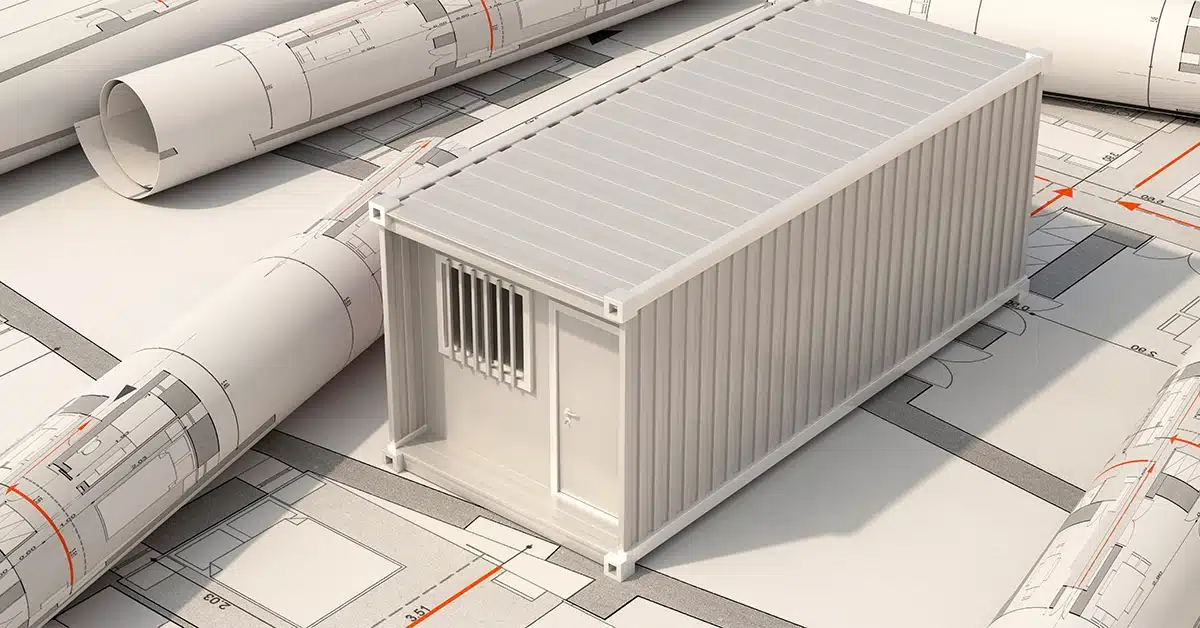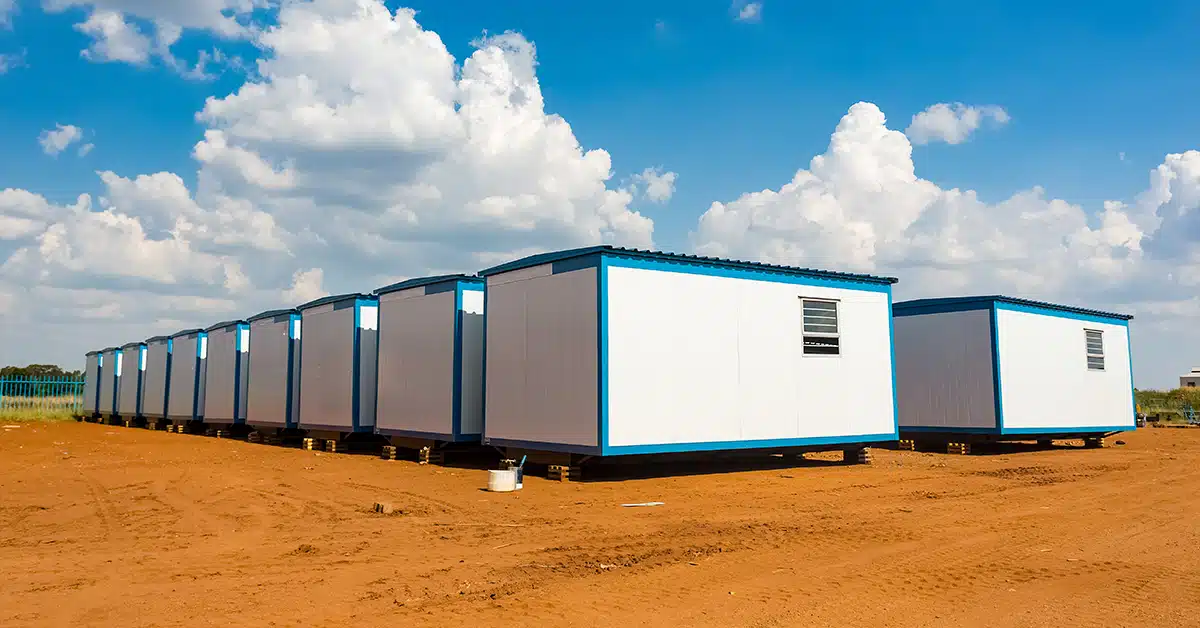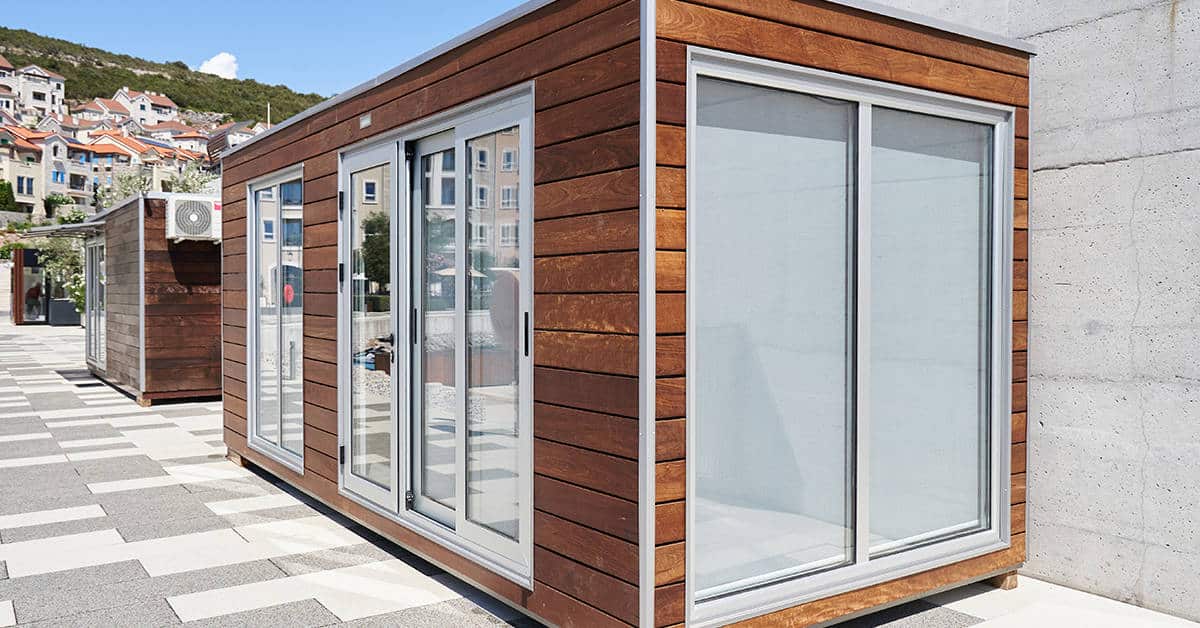According to Allied Market Research, the market for global container homes will be worth more than $73,000 million in the next 3 years. That’s up from around $44,800 million in 2017 and represents a compound annual growth rate of 6.5% between 2018 and 2025.
In other words, the popularity of using old shipping containers for building solutions is going one way: up. They’re being fitted with specialist equipment, converted to tiny houses, used as cafés, bars, and restaurants, and turned into just about anything else for which a typical building can be used.
This may seem counterintuitive to individuals unfamiliar with this type of architecture. After all, at first glance, shipping containers – those large, metal boxes used to transport goods around the globe – don’t even seem fit for habitation.
Yet there are a plethora of compelling reasons why they’re being repurposed in this way. Today, we’re going to highlight a selection of the main ones. Read on to discover exactly why shipping containers are used for building applications.
Environmental Advantages
At a time when the issue of sustainability is front and center of both government policy and public interest, it’s little wonder shipping containers stand out as a viable alternative to traditional construction materials.
That’s because, at their core, shipping containers are an environmentally-friendly building solution. Instead of sending these hulking metal blocks to the scrapyard, individuals and businesses give them a new lease of life. It’s a prime example of recycling in action – reducing unnecessary waste and conserving metal resources.
It also means you stop relying on so many other (often non-renewable) materials that would typically appear on a building site, such as timber, brick, and glass. Ultimately, your carbon footprint drops, and your eco-credentials get a boost.
Affordability
Shipping containers are appealing from a financial perspective too.
Take property, for example. Forbes states that the average cost of building a home in 2022 is approximately $300,000. By contrast, a used or recycled shipping container can cost anywhere between $1,500 and $5,000.
Although a) further expense is required to make it liveable and b) prices vary considerably depending on factors like location, condition, and size, container homes remain relatively affordable housing options.
Given the current state of the economy and the paucity of available homes in the US, the relative affordability of shipping containers makes them tempting propositions.
Functionality
Make no mistake, though. People don’t just use shipping containers to avoid excessive expenditure and reduce their environmental impact. They choose to build with them (on an increasingly frequent basis) for their basic functional advantages.
First and foremost, shipping containers are rugged, durable, and purpose-made to withstand environmental forces that could flatten standard constructions. Built to handle harsh ocean conditions, utilitarian spaces don’t get much better – an attribute that makes them ideal in locations where extreme weather’s commonplace.
A further example of shipping container functionality can be found in their portable nature. Remember, their primary purpose is to carry cargo on ships, trucks, and trains! They’re intended to be transported, making it far more straightforward to deliver them to your door, regardless of where you live.
Creative, Modern Aesthetics
Think of shipping containers as enormous hollow LEGO bricks. Assuming you possess land to put them on, you can take them anywhere, and place them in unique positions/arrangements to end up with a creative modular living or work space.
Trust us, these aren’t the typical cookie-cutter new build homes you’ve grown accustomed to seeing in the suburbs.
Despite their uniform shape, shipping containers provide a pre-built blank canvas that buyers can modify and amend to suit their specific needs. You can create unique, exciting, beautiful, and modern abodes that are 100% original, full of personality, and customizable to the nth degree.
Versatility
Shipping containers offer a high degree of flexibility over the design, configuration, and layout of the building. Likewise, they’re literally designed to interlock and sit on top of each other, thus facilitating the actual construction process.
Purchase multiple containers and you can stack them in novel ways, push them together to create the shape(s) you want, and modify them to suit both your specific tastes and the plot in question.
If you lack space, for example, then why not stack them like a skyscraper? If you have a long thin strip of land instead, you could lay them end-to-end. And, of course, a single 40ft container can be converted into a compact “tiny home”.
Note that shopping containers come in different sizes too, with 20ft and 40ft options being the most popular. For extra headroom, you can find so-called “high-cube” containers that offer an additional 30cm of height.
Speed
Think of the construction process for a typical American property. After you’ve prepared the site and laid the foundations, you have to construct the superstructure, make the roof, handle the exterior and interior fittings, and so on and so forth.
Overall, it’s a significant undertaking that demands a significant amount of time, resources, and manpower to complete.
Using shipping containers expedites proceedings – especially for simple designs. It’s a major reason for their burgeoning popularity. With the superstructure and roof already in place and a relatively small space to convert by modern standards, some projects can be finished in a matter of weeks.
Better still, their portability allows shipping containers to be converted offsite (e.g. in a factory) and then transported to your destination, adding to the convenience.
Use Shipping Containers for Building Solutions
Market projections for shipping container homes reveal in no uncertain terms how popular they’ve become. Both here in the US and in countries all over the globe, a growing number of individuals and organizations are repurposing them for a wide array of building projects.
We hope the insights in this article have shed light on why that’s the case. As we’ve seen, far from this being a gimmick or passing craze, there are genuine and compelling incentives to use shipping containers in the construction industry.






